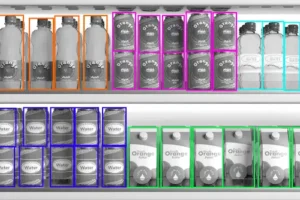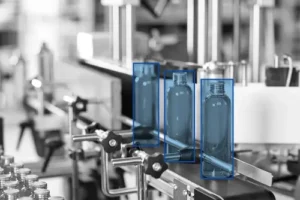Bounding Box Annotation: The Cornerstone of Accurate Object Detection in AI
In the realm of artificial intelligence (AI), particularly within the field of computer vision, accurate object detection plays a pivotal role. This ability for machines to recognize and locate specific objects within an image or video sequence is fundamental for various applications, ranging from self-driving cars and facial recognition systems to medical image analysis and robotics.
Bounding box annotation emerges as the cornerstone of effective object detection. But what exactly is it, and how does it empower AI with the power of object recognition?
Demystifying Bounding Box Annotation

Bounding box annotation is a meticulous process where data annotators delineate the precise location and boundaries of a target object within an image or video frame. This delineation is achieved by drawing a rectangular box around the object, essentially creating a bounding box. It’s akin to circling a suspect in a wanted poster, but with the aid of digital tools.
For each object, relevant data points are also recorded alongside the bounding box. These data points often include:
- Class Label: A specific category assigned to the object (e.g., car, pedestrian, traffic light).
- Bounding Box Coordinates: The numerical values representing the top-left and bottom-right corners of the bounding box.
Through this meticulous annotation process, a vast dataset is meticulously constructed. This dataset serves as the training ground for AI models, enabling them to learn and distinguish between different objects, their characteristics, and their spatial relationships within an image.
The Power of Bounding Boxes in AI

So, how does meticulously marking bounding boxes around objects in images translate into real-world applications? Let’s delve into the power this process unlocks:
- Supervised Learning for Object Detection: The annotated datasets become the training ground for AI models. By ingesting thousands or even millions of meticulously labeled images, the models gradually learn to recognize patterns and distinguish between objects and their backgrounds.
- Feature Extraction and Classification: AI models scrutinize the annotated images, extracting distinctive features that differentiate objects from their surroundings and from each other. This empowers them to classify objects based on the learned patterns.
- Localization and Recognition: Bounding boxes not only identify objects but also pinpoint their precise location within the image. This is crucial for applications like self-driving cars, where recognizing a pedestrian isn’t enough; the car needs to locate the pedestrian’s position to take appropriate action.
Bounding Box Annotation: Applications Across Industries

The applications of bounding box annotation are far-reaching and constantly evolving. Here are some prominent examples across various industries:
- Autonomous Vehicles: Self-driving cars rely heavily on object detection to navigate roads safely. Bounding box annotation trains AI models to recognize pedestrians, vehicles, traffic signs, and other crucial elements, enabling autonomous decision-making.
- Medical Imaging: In the healthcare sector, bounding box annotation streamlines medical image analysis. AI can be trained to detect tumors, fractures, and other abnormalities in X-rays, CT scans, and MRIs, leading to earlier diagnosis and improved treatment outcomes.
- Retail Industry: For businesses in the retail sector, bounding box annotation facilitates image recognition in surveillance footage to detect shoplifting or identify customers browsing specific products. It can also be used to automatically tag products in online stores for improved image search functionality.
- Advanced Security Systems: Bounding box annotation contributes to the development of sophisticated security systems. AI can be trained to recognize suspicious activity or objects in surveillance footage, enhancing security measures in critical infrastructures and public spaces.
Subul Data Annotation: Your Partner in High-Quality Bounding Box Annotation

At Subul Data Annotation, we understand the paramount importance of high-quality bounding box annotation for the success of your AI projects. Our team of experienced and meticulous data annotators utilizes cutting-edge tools and processes to ensure the accuracy and consistency of your annotated datasets.
We offer a scalable and cost-effective solution to meet your specific project requirements. Whether you need bounding box annotation for a handful of images or for a large-scale dataset, our team is equipped to handle projects of all sizes.
Here’s what sets Subul Data Annotation apart:
- Meticulous Quality Control: Our rigorous quality control procedures guarantee the precision of every bounding box and associated data point.
- Domain Expertise: We have experienced annotators with industry-specific knowledge to ensure accurate annotation in specialized fields like medical imaging and autonomous vehicles.
- Scalability and Efficiency: We can seamlessly scale our workforce to meet your project’s demands, ensuring timely delivery without compromising quality.
- Advanced Data Annotation Tools: We leverage cutting-edge annotation platforms to streamline the process and enhance annotator efficiency.
- Cost-Effectiveness: We provide competitive pricing solutions tailored to your budget and project scope.
Take Your AI Project to the Next Level with Subul Data Annotation

Bounding box annotation is an essential step in unlocking the potential of object detection in your AI projects. Partner with Subul Data Annotation and leverage our expertise to build high-quality annotated datasets that fuel accurate and reliable object detection models.
Ready to get started? Contact Us today for a free quote and discuss how we can empower your AI project with superior bounding box annotation services.
Bounding Box Annotation FAQ
1. What type of images can be annotated with bounding boxes?
2. How much data is required for effective bounding box annotation?
3. Can bounding boxes be used for tasks beyond object detection?
4. How long does the bounding box annotation process take?
5. What are the benefits of using Subul Data Annotation for your bounding box annotation needs?
- Accuracy and Consistency: Our experienced team guarantees precise and consistent annotation through rigorous quality control procedures.
- Domain Expertise: We have specialists with knowledge in various fields to ensure accurate annotations in specific domains like medicine or autonomous vehicles.
- Scalability and Efficiency: We can seamlessly adapt our workforce to your project size, delivering results promptly without sacrificing quality.
- Advanced Technology: We leverage cutting-edge annotation tools to streamline the process and maximize annotator efficiency.
- Cost-Effectiveness: We provide competitive pricing options tailored to your budget and project scope.


















